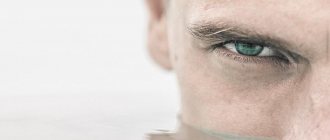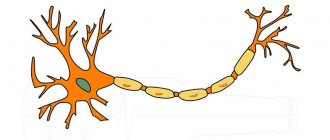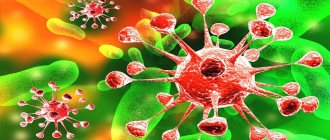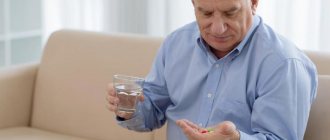Fear of choking - phagophobia
One of the most destructive phobias for the body is phagophobia. It manifests itself as a fear of swallowing food or liquid for fear of choking. In a mild form, it can only occur in relation to certain types of food that seem dangerous. For example, to fish because of small bones, or to dry flour products because of the abundance of crumbs. In this case, swallowing liquid does not cause concern. In more severe cases, fear is caused by absolutely everything that is in the mouth. Therefore, people susceptible to severe phagophobia eat exclusively moist, porridge-like food, putting no more than half a teaspoon into their mouths at a time. In specific cases of phagophobia, fear is caused by individual procedures, for example, swallowing pills, while swallowing food and liquid does not cause excruciating fear of choking. Phagophobia, like any other phobia, is dangerous not in itself, but because of its consequences. Fear of swallowing in rare, particularly severe cases can lead to such severe depletion of the body that it poses a real threat to physical health. Next, we will look at the symptoms, causes, features and treatment of phagophobia.
Causes of psychogenic tremor
Psychogenic tremor, unlike organic tremor (which is an independent neurological disease or a symptom of diseases of the central nervous system or other systems), it does not lead to any permanent changes in the human body.
That is, in this case the bio and electrochemistry of the body does not change structurally. Psychogenic tremor is caused by psychological reasons: most often it is a symptom of depression, post-traumatic stress disorder (PTSD), panic disorder, social phobia and other mental disorders affecting the function of the nervous system. I want to mention the psychological causes of tremor.
Initially, psychogenic tremor occurs when a person is overwhelmed with emotions, the manifestation of which is prohibited. In the human psyche, a sudden collision of several opposing emotions occurs, which are based on desires. The ban on showing emotions is based on the fear of criticism from people important to the child, which once arose at the moments when he showed emotions, his own opinion, and will.
Symptoms of phagophobia
The main symptom of phagophobia is the fear of swallowing itself. In most cases, the imagination conjures up the prospect of suffocation from mouth contents entering the respiratory tract. Especially if at least once in your life you have had to choke badly or watch a scene of suffocation from the sidelines. Sometimes a person can chew food for as long as he likes, but is unable to force himself to swallow it. The act of swallowing itself requires lengthy and complex preparation. For example, chew food to a particularly liquid state, when its thickness is practically indistinguishable from saliva. If the fear of swallowing contains elements of OCD (or vice versa - protective rituals are built around operations with food), chewing can be done counting. The tendency to resume counting when a mistake is suspected can prolong a meal for hours.
Another important symptom is the special preparation of food. Products are carefully checked for the presence of “prohibited” and “suspicious” components. If everything is clear with the “forbidden” elements - they are known and are not allowed on the table, then suspicion can be caused by a variety of properties of the products. In my practice, I had a client who ate only products from a limited number of manufacturers. The starting point of his illness was the news of the recall of a batch of products from a European company in which glass was found in jars of baby food. Products with an expiring date may also be suspicious, even if they will officially be considered fresh for a long time. If you are afraid of swallowing, it may seem that over time lumps and lumps appear in your food, threatening to get stuck in your throat. In general, the range of signs by which products can be rejected in case of phagophobia is quite impressive, and is limited only by the possibilities of human imagination.
By the way, the fear of swallowing food is not necessarily due to the fear of choking. Sometimes it seems that the swallowed food has not moved down the esophagus, but continues to stand in a lump in the throat. Generally speaking, the feeling of a lump in the throat - the so-called hysterical lump - is a separate symptom, not necessarily associated with a fear of swallowing. But when these two disorders are present at the same time, the consequences can be quite unpleasant. The feeling of food stuck in the throat can be very persistent, even if the food was easily washed down with water. Anxiety will definitely find a logical justification for itself. For example, with phagophobia, it may seem that a small fish or chicken bone has stuck into the middle of the esophagus and is stuck there, interfering, but not completely preventing the passage of food. And since people prone to phobias are usually very impressionable, anxiety can grow to enormous proportions.
The mechanism of occurrence and consolidation of the fear of choking is similar to the mechanism of occurrence of any other phobia. The development of phagophobia usually requires a combination of several reasons. The first reason is impressionability and a predisposition to suspiciousness and anxiety. Such a person will always find something to worry about. Even if there are no objective reasons for concern, he will always find the source of a probable threat and will definitely focus his attention on it. The second reason is the suffocation scene, which is witnessed by a suspicious person. And finally, the third reason is fixation on the experience, if you failed to distract yourself in time and switch your attention to something important, but not traumatic.
It should be noted that for phagophobia to occur, it is not at all necessary to observe a real person choking on food. I remember two cases of phagophobia that arose, so to speak, “based on” suffocation. In the first case, the boy watched the scene of salting fish in the kitchen. Suddenly one of the fish, which had been rolled in salt and had its mouth stuffed with salt, began to beat its tail. She turned out to be still alive. The impressionable boy instantly put himself in the place of this fish and immediately vomited. Then he cried for a long time, and in the morning he had problems swallowing and an obsessive taste of salt in his mouth. The therapy was quite long because its goal was not so much the problem with swallowing itself, but rather impressionability and general unpreparedness for life with all its cruel surprises. The end was reached when the boy realized that the natural death of a small fish from dissolving alive in the gastric juice of a larger fish is no less painful than at the hands of a fisherman. And when he could read, without much trepidation, about cases of people dying in the stomachs of large fish, like giant catfish.
But if in the example with the boy there was still some semblance of a real prototype of suffocation, then the second case of phagophobia was completely provoked by the exceptionally developed imagination and sensitivity of an adult man. China has always been famous for its knowledge of human nature and its specific oriental aesthetics. Including the unique aesthetics and sophistication of everything related to death. And if the Chinese emperor sentenced someone from the nobility to death, then he “generously” gave a choice: a humiliating public execution or independent death in a calm home environment. To carry out the latter, he passed poison, a silk noose, or gold foil through a messenger to the condemned man. The most interesting thing is the foil. The person condemned to death had to place the foil over his open mouth and inhale sharply. Soft gold foil reliably blocked the airways, which led to death. The impressionable man discussed above read the method of execution described in the book and literally lost sleep. As luck would have it, at that moment he was on vacation, and nothing important could distract his attention and calm his imagination. He began to concentrate on swallowing, constantly controlled his breathing and eventually came to full-fledged classical phagophobia.
Often the fear of choking is associated with taking pills. Intentional swallowing of a solid object, which is a tablet, is not provided for by human nature, and by and large is an unnatural act. This means that you need to learn to swallow pills on purpose, and you usually have to do this in childhood. Some tablets, especially earlier, had a cylindrical shape with a pronounced angular edge, and even a cut for dividing into two parts. Half of such a tablet could really scratch your throat. Not only were they large and angular enough for a child’s throat, but they also tasted disgusting and even caustic, like, for example, aspirin. So there was a layering of factors: childhood, illness, inept swallowing of a nasty pill that could stick in the mouth or throat. And there was also irritation from tired parents who did not want to understand the problem of a sensitive child.
If even for quite psychologically stable people, swallowing pills is not a pleasant experience, then what can we say about people with problems? In conclusion of the conversation about tablets, I would like to remember Dovlatov, who cited someone’s assumption about tablets that do not dissolve inside, but lie in a heap at the bottom of the stomach. In Dovlatov’s episode, such a picture made one of those present feel ill. Despite the absurdity of such an idea, it sometimes exists at the level of the unconscious, creating specific problems such as the inability to swallow a completely harmless pill.
Treatment for phagophobia begins with the therapist introducing the client to safe chewing and swallowing techniques. Attention is also paid to familiarization with the anatomical and physiological characteristics of the body that determine the possibility of choking on food, and the circumstances under which the likelihood of this increases. On the other hand, the technique of correct behavior when a foreign body enters the respiratory tract is covered. The first, together with the second, constitutes a safe food technology. Next you need to turn to statistics. For example, compare how many attempts to cross the road account for how many tragedies, and compare this indicator with the number of deaths per attempt to eat. The result will be very surprising. But despite the real danger, people regularly cross the road! It should also be noted that choking when swallowing is usually either drunk, or those who are openly rowdy while eating, or, in extreme cases, talking while eating.
The client, armed with a special safe technology for eating, has no choice but to admit: based on the statistics of choking while eating, and taking into account the behavior of those with whom this happens, the likelihood of a tragedy for them is zero. After this, you can move on to a step-by-step safe nutrition training program. The program is built from simple to complex. Each stage is completed at a level of stress at which fear is either insignificant or absent altogether. At the end of the program, the client develops such behavior at the table in which those around him do not even think that there is something wrong with the person. In this case, naturally, there is no fear. And if suddenly something seems suspicious, then there is always the opportunity to use any of the learned techniques that make eating absolutely safe. Of course, the treatment of phagophobia is not limited only to the indicated technique. In each case, you need to take into account the individual characteristics of the client and use other techniques.
fear-trevozhnost-fobiya.ru
World science teaches how to swallow medications correctly
Some people can swallow tablets and capsules in handfuls without washing them down; others find it difficult to swallow even a small pill. Such difficulties are not just an inconvenience. This is a common reason for non-compliance with the treatment regimen and, as a result, worsening of the disease.
There are no special Russian statistics on this matter, but it is known that almost 40% of the US population has difficulty taking medications. Less than a quarter of these people discuss the issue with their health care providers, 8% tend to skip medications, and 4% refuse to take capsules and tablets.
A Norwegian study from 1995 gives different figures: 26% of the population have difficulty swallowing. It is also noted that patients consider the size of the tablets to be the biggest problem; the second and third most important factors were the nature of their surface and taste. Women suffer from swallowing disorders twice as often as men, and patients over 70 years of age experience fewer difficulties than younger ones.
Why doesn't it swallow
The reasons why many cannot swallow even the smallest tablet vary. Dysphagia (literally - swallowing disorder) is the most severe of them, with it it is difficult for a person to swallow even chewed food. This condition always has organic preconditions - a stroke, surgery, gastroesophageal reflux (return of gastric contents into the esophagus), connective tissue diseases (scleroderma) and others. Dysphagia requires serious treatment under medical supervision.
In other cases, problematic swallowing is often associated with the fear of the tablet getting stuck in the throat and vomiting. Most often, this fear is associated with an unpleasant experience - it gives a feeling of the danger of taking medications, as a result of which the muscles of the pharynx reflexively tense. To swallow a pill, such people need to overcome a psychological barrier so that the muscles relax.
A person perceives food as ready to swallow when it is moistened and chewed enough to move into the stomach. Usually no one chews yogurt, it is swallowed immediately - its consistency contributes to this. However, the inability to chew a solid substance, in this case a tablet, can “confuse” the physiological mechanisms of swallowing regulation.
There are three phases of swallowing: oral (chewing and moving food to the back of the mouth), pharyngeal (closing the larynx with the epiglottis and stopping breathing) and esophageal (rhythmic contraction of the muscles of the esophagus that propel the bolus of food). People control the first phase consciously, so it is the one that is most easily corrected.
Isn't it easier to chew?
Many people chew, dissolve, or mix the tablets with food. Very often this cannot be done, since most modern drugs have a protective shell and a special structure that are required for proper absorption of drugs. After crushing the tablets, the active substances may simply not reach the target organs in the required concentration or, conversely, sharply create dangerous concentrations in the blood. Therefore, the tablets should be swallowed whole, unless the instructions recommend otherwise.
Swallow according to science
Stephen Cassivi, a Mayo Clinic thoracic surgeon who specializes in diseases of the esophagus, says the key to improving the situation is to practice before fear goes too far. He taught his children to swallow normally using pieces of jelly candies.
The specialist offers the following methods:
1. You need a smooth network. Take a sip of water, then put the tablet in your mouth. With a second sip of water, swallow the tablet, reinforcing this with positive motivation, for example, reminding yourself that this tablet is much smaller than the steak you ate today.
2. Turning your head slightly to the side can help as it opens your throat a little wider.
3. Distraction can also be a good tactic. If you put the tablet in a glass of yogurt, the body can take it without discomfort.
It is important not to worry about the pill going down the wrong way. Unless a person suffers from neuromuscular diseases or pharyngeal deformity, this is almost impossible.
In a recent study on medication administration published in the Annals of Family Medicine, clinical pharmacologists from the University of Heidelberg developed two optimal methods for swallowing tablets and capsules.
1. The “bottle” method is intended for consuming tablets. You need to put it on your tongue, then tightly wrap your lips around the neck of a plastic bottle of water. With a sharp tilt of the head back, a large sip is taken from the bottle. This ensures that the tablet enters the stomach easily.
2. The forward bending method is more suitable for taking capsules. The capsule is placed on the tongue and a little water is taken into the mouth. Next, you should tilt your head so that your chin comes close to your chest. In this position, it is much easier to swallow the capsule.
The study involved 151 volunteers aged from 18 to 85 years. At the end of the experiment, 85% of participants said that they would now constantly use one of these methods. People who have difficulty taking medications should learn from their experience and adopt the proposed methods. Success is guaranteed by science.
rusplt.ru
Fear of swallowing pills
September 13, 2020, 3:40 pm
Until the age of 25, I took practically no medications, except for runny nose drops, sedative drops and cough syrup. Then during pregnancy I took so many pills of different sizes and shapes that I feel sick when I think about it. The problem is that every pill I take is torture for me. I can't swallow a pill until I chew it. It’s gotten to the point where I keep even folic acid (a tiny tablet) in my mouth for a couple of minutes until I swallow it. Capsules are a different story altogether. I am not friends with them at all. You have to open it or bite through it if it is one-piece. You can’t do that, it’s harmful. But there is no other way. And I take more water, it still doesn’t help. My throat tightens. Although I understand perfectly well that I swallow food in much larger pieces. Who has the same problem? How are you coping?
September 13, 2020, 3:50 pm
Pay attention to the stripe on the tablet; it is needed if the patient cannot swallow. In this case, take a simple screwdriver and simply screw the tablet in on the other side.
September 13, 2020, 3:52 pm
Pay attention to the stripe on the tablet; it is needed if the patient cannot swallow. In this case, take a simple screwdriver and simply screw the tablet in on the other side.
oh-oh, how funny. are you an unrecognized comedian?
September 13, 2020, 3:53 pm
Until the age of 25, I took practically no medications, except for runny nose drops, sedative drops and cough syrup. Then during pregnancy I took so many pills of different sizes and shapes that I feel sick when I think about it. The problem is that every pill I take is torture for me. I can't swallow a pill until I chew it. It’s gotten to the point where I keep even folic acid (a tiny tablet) in my mouth for a couple of minutes until I swallow it. Capsules are a different story altogether. I am not friends with them at all. You have to open it or bite through it if it is one-piece. You can’t do that, it’s harmful. But there is no other way. And I take more water, it still doesn’t help. My throat tightens. Although I understand perfectly well that I swallow food in much larger pieces. Who has the same problem? How are you coping?
I have the same thing, and sometimes I even vomit if it goes down the wrong throat. Every pill I take is torture, I don’t know how to fight it. I tried different things, putting the tablet closer to the end of the tongue (closer to the throat) - the gag reflex begins, if closer to the tongue, then I can drink a liter of water, and the tablet will remain in the mouth. I choke on them, but sometimes it just flies into my stomach, but who knows what to do. But you cannot chew the capsules and pour out the medicine itself, dissolving it in water and then drinking it. I have a friend who works in a chemical laboratory, so they develop this special shell for tablets, and it (the shell) is designed so that the tablet passes its path and dissolves in the “spot of the disease”, and not somewhere in the throat, because There is no benefit from taking such tablets in “opened form”.
m.woman.ru
Anti-anxiety pills
There is a moment in every person’s life when he cannot collect his thoughts due to fear and anxiety. It doesn't matter whether it's a student nervous about an exam or an artist who is afraid to perform in front of a huge audience. It is at these moments that special drugs that suppress anxiety will help.
The following drugs are effective in such situations: Mexidol and Glycine.
The first drug is usually prescribed in the following dose: 1-2 tablets three times a day. The maximum daily dose is 8 tablets, but not one more! Take this medicine for two to six weeks. Abrupt cessation of use is prohibited; you must gradually reduce the dose consumed.
The second common drug is Glycine. Even children are allowed to use it. It is taken either under the tongue or absorbed between the gum and upper lip. The schedule for taking this drug is purely individual: only as prescribed by a doctor. The body absorbs this medicine well, and the only contraindication to its use may be intolerance to the components.
Glycine tablets
If for some reason the patient cannot take either the first or the second drug, then the solution may be a safer, but no less effective drug - valerian tablets. True, they also have their drawbacks. The fact is that they have a cumulative effect, so you shouldn’t expect instant results. You will feel it after three weeks.
A good option could be “Pasit”, which has proven itself well recently. This medicine can calm a person in a matter of minutes. But, despite the naturalness of the raw material, it should be taken carefully.
It is advisable to consult a doctor and take sedatives under close supervision!
What is phagophobia and how to overcome it
Phagophobia is one of the phobias for the human body, manifested as a fear of swallowing food or liquid.
The fear of choking on food is called phagophobia
The main characteristics of phagophobia are persistence and obsession. The main reason is the fear of choking and suffocation. The person cannot eat food normally. Problems with digestion and the gastrointestinal tract appear. Thanks to the development of medicine, this phobia can be eliminated.
Drugs used for psycho-emotional stress.
The concept of “stress” has firmly entered into the everyday life of modern people. We hear about it in everyday life and in the media. In a simple human understanding, stress is a continuous psycho-emotional stress to which a person is exposed in the process of life, be it at work, at home, among friends, etc. Every person has ever experienced it, talked about it, but few people try to understand what it is stress and what is its essence. We will try to understand a little about the essence of stress and the biochemical changes that occur in a living organism under the influence of stress.
And so, stress in English means pressure, pressure, tension.
In the erroneous understanding of people, stress is always a negative event that negatively affects people. However, a positive event can also be stressful. For example, the birth of a child, the return of a loved one, promotion, etc. There are two types of stress - eustress and distress. Factors that cause stress - stressors - vary in strength and duration. If the effect of stressors is short in time and insignificant in strength, eustress develops. Eustress is a positive event that occurs without damage or with minor disruptions in the functioning of organs and systems of the body. Eustress trains a person and moves a person’s adaptation capabilities to a higher level of stress resistance. If exposure to stressors occurs frequently and with excessive force, then the ability to adapt to new changes is depleted, which leads to disruptions in the functioning of body systems. In this case we are talking about distress. Distress in English means unhappiness, tension, exhaustion. When distress occurs, the body's adaptive capabilities are depleted, which can even lead to death. What do these two diametrically opposed events have in common? The commonality lies precisely in the essence of stress. According to Selye, the founder of the doctrine of stress, stress is a nonspecific response of the body to any impact requiring adaptive changes in the body. Any impact on the body causes specific changes in the body that depend on the nature of the stressor, for example, the release of adrenaline increases the functioning of the cardiovascular system, diuretics increase diuresis, etc. However, all these effects, regardless of differences in the specific response of the body, cause the same manifestations, which are reflected in the form of a nonspecific response. This is the essence of stress. Regardless of the nature of the stressor, the body’s nonspecific response will contain a stereotypical set of identical changes in the body. This set of changes includes enlargement and increased activity of the adrenal cortex, atrophy of the thymus gland and ulceration of the gastrointestinal mucosa - Selye's triad. In this regard, the prevention of “life stress” is an important task of medicine.
To prevent stress, it is recommended to engage in relaxation, yoga, walks in the fresh air, and communication with friends and loved ones. Pharmacological correction of stress involves the use of medications. The most common are anxiolytics and sedatives, less often antidepressants. Very great importance is given to sedatives of plant origin. The range of such drugs is significant. It is important to take into account the fact that people suffering from stress do not visit doctors and self-medicate. In this regard, all drugs can be divided into prescription and over-the-counter. Antidepressants and anxiolytics, with a few exceptions, are prescription drugs, sedatives are over-the-counter drugs. The following drugs with anti-anxiety effects are registered in the medicinal registry: Phenorelaxan, Diazepam, Diamidazepam, Phenazepam, Afobazol, Mezapam, Alprazolam, Mebicar, Neurofazol, Selank, Tofisopam, Etifoxin, Hydroxyzine, Medazepam, Buspirone, Oxazepam, Lorazepam. Their range is quite diverse and you can’t do it without the qualified help of a doctor. The effect of anxiolytics is manifested through the inhibition of various subcortical structures responsible for emotional reactions, inhibition of the connection of these structures with the cerebral cortex. The main pharmacological effects of anxiolytics are the anxiolytic effect itself, then, as the dose increases, sedative, hypnotic, muscle relaxant, anticonvulsant, and amnestic effects appear.
Herbal preparations differ from those listed above in that they act gently, without significant negative effects on humans. This is especially true given the constant exposure to stressful situations. There is a high commitment of the population to the use of drugs obtained from medicinal plant materials. The main drugs with a calming effect are obtained from valerian officinalis, motherwort, peony evasive, lemon balm, passionflower. There are also various combinations of these herbal remedies in the form of sedatives.
Causes of phagophobia
Lack of oxygen as a consequence of mechanical suffocation is one of the reasons why phagophobia occurs.
Other causes of fear of choking:
- Genetic predisposition. Negative associations appear, due to which the fear of swallowing food takes root. Such nerve currents can be inherited.
- Temperament. The innate properties of the nervous system depend on it. Pessimists, suspicious and anxious people are most susceptible to phagophobia.
- Neurotransmitter deficiency in the brain. They can provoke negative currents and cause fear of swallowing food.
- Childhood trauma occurs when a child is forced to eat foods they don't like. Associated with disgust and nausea.
- Visual perception. Sometimes a person eats food while watching a movie and may choke during sudden scenes.
Phagophobia forces you to completely change your diet. The patient refuses to eat large foods. Prefers finely chopped, minced or liquid foods
A person will avoid the following foods:
- baked goods due to the presence of small crumbs;
- fish due to the presence of small bones;
- separate meat dishes due to the presence of bones;
- fruits (watermelon, pumpkin, melon, peach, nectarine) and berries (cherries, cherries), etc.
Most people have no fear of drinking liquids at an early stage.
Phagophobia is dangerous due to its consequences. Because of it, a person suffers from anorexia and cybophobia (fear of food and eating it), feels a loss of strength and lack of vital energy.
Anyone who suffers from phagophobia is afraid to establish new social contacts or maintain old ones. He believes that no one can accept his strange behavior.
The patient stops visiting public places and events with large crowds of people. Ignores invitations to catering establishments and family dinners. He creates an individual “liquid” menu for himself, which takes a lot of time.
It is difficult for such a person to make contact with business partners, colleagues, or maintain relationships with relatives, friends, or loved ones. As a result, depression occurs, the desire to develop disappears, and there is no interest in previously loved things.
At the initial stage, it is easy to determine the presence of phagophobia. A person is afraid of choking on his own saliva, solid food, or liquid, but he is able to overcome fear.
This disorder is accompanied by symptoms:
- rapid heartbeat;
- internal trembling;
- dizziness;
- frequent and rapid, difficult breathing;
- increased sweating;
- nervousness;
- fussiness;
- constant irritability;
- feeling of muscle weakness;
- disorientation;
- sleep disturbances, etc.
A person with phagophobia chews food for a very long time and thoroughly. The act of swallowing occurs when food is as thick as saliva.
Before eating, each product is tested for the presence of prohibited and dangerous components. A person, having ascertained the quality, buys products from certain manufacturers, knowing the composition of each dish.
Phagophobe chews food for a very long time
What substances may be present in sedative medications?
Sedatives can be single-component or contain several active substances that reduce nervous tension in the body.
Of these, the most commonly used are the following:
- Bromine salts (sodium, potassium, calcium bromides), which are one of the oldest in therapeutic practice for the purposes of sedation. These chemical compounds are used for neuroses and neurasthenia, increased irritability, sleep disorders, hysteria, convulsions and increased motor activity in epilepsy, chorea. The peculiarity of the action of these salts is the concentration of inhibition processes in the brain, which prevents the occurrence of side effects such as drowsiness. The antiepileptic effect is achieved by increasing the threshold of excitability of the central nervous system. Bromine is excreted from the body very slowly - within 2 weeks, mainly through the kidneys and gastrointestinal tract. Contraindications are individual intolerance, heart failure, kidney pathologies, anemia and atherosclerosis. The disadvantages include that with prolonged use, intoxication can develop. Currently, bromine salts are rarely used.
- Valerian officinalis (tincture, tablets, rhizomes with roots, fees).
The substances contained in this plant do not inhibit the activity of the central nervous system, but help reduce nervous excitement (anti-neurotic effect) and improve the functioning of the hypothalamus. Preparations based on it are used to treat insomnia, neuroses, migraines associated with overexcitation; spasms of the gastrointestinal tract and cerebral vessels, vegetative-vascular dystonia. They enhance the effect of sleeping pills. In patients with hypersensitivity, valerian causes drowsiness and depression. - Melissa officinalis (lemon mint). This plant helps reduce feelings of fear, anxiety, depression, reduces spasms, improves blood circulation in the brain and has an immunomodulatory, analgesic and antioxidant effect.
- Peppermint and preparations based on it have a calming, antispasmodic, analgesic, antiseptic and choleretic effect.
- Intoxicating pepper (kava-kava). An extract from its roots has a calming, moderate hypnotic, antispasmodic and analgesic effect.
- Peony evasive (tincture, tablets) helps normalize natural sleep. It is also used for neuroses. The tincture is usually prescribed as part of complex therapy for diseases of the central nervous system.
- Motherwort (tincture, herbal powder, tablets). The therapeutic effect of this plant is similar to valerian. The substances it contains (bitters, flavonoids and others) regulate the functioning of the nervous system, reduce blood pressure and heart rate, and have an antispasmodic and anticonvulsant effect. The herb is used for neurasthenia, hypertension, epilepsy and menopausal syndrome.
- Passionflower (tablets, capsules). The herb of this plant has a calming and anticonvulsant effect.
- Hawthorn. The flowers and fruits of the plant are better known as a remedy that improves the contractile activity of the heart muscle. However, they also have antispasmodic and sedative effects.
As therapeutic experience shows, combination medications have the best effect.
Fear of choking on a pill
Some phagophobes are afraid to swallow pills. This is due to their appearance. Swallowing solid objects is unnatural.
For people with this disorder, swallowing causes panic and terror. Scientists have developed several effective ways to take pills without the risk of choking.
Ways to swallow medications for phagophobia:
Those who have managed to cope with the disorder are advised to crush the tablets into a powder and consume them with water.
It is recommended to soak the capsule in a glass of water for 3-5 minutes. The shell will become softer and easier to swallow. One way is to mix the contents of the capsule with small pieces of banana.
Many phagophobes are afraid of choking on a pill
Treatment of phagophobia
Treatment of the disorder is necessary to restore normal functioning of the body. You need to be examined by a neurologist and psychiatrist. It is important to normalize nutrition, improve digestion and metabolism.
Stages of treatment
Consultation. The doctor tells the patient about the structure of the digestive system and the main processes in it, answering the questions:
The topic of safe swallowing of solid foods needs to be addressed. It is important to tell you what to do if you or someone nearby chokes.
The final stage is successful if the doctor has cured the patient. The average treatment period is 3 months.
A psychologist will help identify the cause of fear
What are sedatives?
Sedatives that reduce nervous tension in the body have the following effects:
- strengthening of inhibition processes in the central nervous system;
- suppression of arousal;
- making it easier to fall asleep;
- deepening sleep;
- enhancing the effect of other neurotropic drugs (analgesics, anesthetics and antiepileptic drugs).
In therapeutic practice, they are widely used for various types of stress caused by difficult life situations and psychological trauma, as well as stress arising in connection with important events of both a negative and positive nature (passing exams, entering an educational institution, the birth of a child, a shift). work, conflicts in the team, etc.).
Treatment methods
Depending on the stage of the phobia, different methods based on psychotherapy are used. The main ones among them are neurolinguistic programming and cognitive behavioral therapy. It is necessary to form an adequate perception of the patient’s condition and the symptoms of phobia.
Neurolinguistic programming
It has long been used to treat phobias, including the fear of swallowing food. Consists of 5 components: symptoms, causes, results, resources, effects. Sequence of treatment:
This therapy allows you to provide basic information for prescribing a treatment regimen.
Analysis helps the patient see the essence of the problem and possible ways to solve it. It happens that 2-3 sessions are enough for complete recovery.
Neurolinguistic programming is an effective method for treating phobias
Cognitive behavioral therapy
The method is approved by WHO and is one of the most effective. The essence of treatment is to identify and eliminate negative thoughts. During therapy, answers to the following questions are given:
The main thing is that the client answers himself. The doctor’s job is to give the right direction. As a result, a person must change negative thinking to positive.
The technique helps eliminate fictitious beliefs. A person learns to independently identify and reject negativity, to identify erroneous thoughts that cause anxiety.
The first stage of treatment is consultation, the second is putting what you hear into practice.
Treatment of fear of choking
Phagophobes cannot live a full life and feel self-sufficient, because restrictions manifest themselves not only in eating behavior, but also in social contacts. For example, the patient does not go to cafes with friends, does not stay with colleagues at corporate events, and stops visiting relatives with the obligatory tea party.
Food, water and medicine help keep you alive and healthy. Therefore, it is important to recognize the problem early and seek professional help.
Important! The cause of the disease is not always psychological problems. Inflammation of the pharynx, diseases of the esophagus or stomach often cause difficulty when trying to swallow anything. Therefore, the examination must be comprehensive.
Fortunately, phagophobia responds well to a variety of treatment options. If the gastroenterologist does not find any deviations from the norm, you should seek help from a psychologist-hypnologist, for example, Nikita Valeryevich Baturin. Such a specialist will individually select treatment using psychotherapeutic methods for a specific case.
Psychotherapeutic treatment
When a patient turns to a psychotherapist with the complaint “I’m afraid to swallow,” the specialist uses psychotherapeutic methods, including putting him into a state of hypnosis, to find out the source of this fear. Next, the psychologist, using the method of cognitive behavioral therapy, corrects the patient’s unconscious inferences and attitudes that distort real events. Proper correction of this way of thinking completely eliminates anxiety disorders, depression and inadequate perception of food.
Another common method of influencing the psyche of a person suffering from phagophobia in order to get rid of fear is neurolinguistic programming. The essence of this technique is for the patient to understand that he himself controls his own mental activity. Having achieved this understanding, the patient builds effective strategies for improving himself and gaining control over his fears.
If within several months psychotherapeutic methods of treatment do not alleviate fear, medications are added to them.
Drug treatment
Drug treatment is aimed at eliminating anxiety-phobic manifestations of the disease with the help of antidepressants and anxiolytics. These drugs normalize the state of the patient’s nervous system, fight anxiety, neuroses and help to find peace of mind. Treatment with medications is long-term, at least one year.
In especially severe cases, tranquilizers and antipsychotics are used. These drugs have quite severe side effects, so long-term use is not recommended. Only in critical situations under medical supervision.
Drug treatment, not supported by psychotherapeutic intervention, can give a regressive result after stopping taking the drugs. Therefore, the help of a psychotherapist should not be neglected. Combined treatment provides a guaranteed result of complete elimination of phagophobia.
Alternative Treatments
Treatment of phobias by a psychotherapist often takes a long time. To achieve a stable positive result, psychotherapy is supported by alternative treatment methods. These include:
- art therapy (painting with paints or sand, sculpting, playing musical instruments);
- meditation, reading mantras;
- healthy lifestyle, physical activity;
- breathing exercises;
- use of self-hypnosis techniques.
Another way is to try to focus your attention on something distracted while eating. When food hits the root of the tongue, it triggers a reflexive swallowing reflex. Don't disturb your body by focusing on your fear. At first it will work out poorly, but over time this tactic will yield results.
Drug treatment
The optimal solution is to combine drug treatment and psychotherapy.
- Anxiolytics suppress stress and eliminate anxiety. Relieves emotional stress and anxiety. Do not cause addiction.
- Anticonvulsants. They have no side effects. Treatment does not take much time.
Scientists tell how to swallow pills correctly
Place it on your tongue, drink water and swallow the tablet. This is how we all learned to take medicine. But for many people, swallowing medications causes discomfort. Some people have to chew pills for convenience, others feel an unpleasant bitter taste after taking the medicine, and others are afraid of choking or choking.
Scientists have proven that 10 percent of patients refuse necessary treatment precisely because they do not like to swallow pills.
Scientists from Germany, from the University of Heidelberg, led by Dr. Walter Heifeli, have come up with two effective techniques for swallowing tablets and capsules.
You will need a water bottle. Place the pill on your tongue. Press your lips to the neck of the bottle. Take a sip, and the tablet along with the water will float away in the desired direction. The density of the tablets is much higher than the density of water, so they often do not “wash off” but get stuck in the mouth. But with this technique, you can easily wash the tablet straight down your throat towards your esophagus.
The capsules are easier to swallow in an upright position with your head slightly tilted forward. The density of the capsules is lower than the density of water, they are light and often begin to “float” in the oral cavity. Therefore, this head position will greatly help you send the medicine on the right path.
More than 60 percent of people who took part in the experiment admitted that swallowing pills was much easier this way.
But we wish you not to take medications and always be healthy!
Read also
Strawberries: what are the benefits of aromatic berries
Strawberry season is now in full swing. The counters are bursting with ripe berries. I just want to buy more - make jam, freeze it for the winter. Every child knows that strawberries are delicious. But what is its benefit?
Ural doctors delivered the smallest girl in Russia
The baby was born weighing 370 grams
Tips for Fans and Supporters: How to Survive Football Month
A simple set of rules that will help football fans get the most out of watching World Cup matches
Flu prevention
With the onset of cold weather comes the season of illnesses and colds. Komsomolskaya Pravda tells how to properly prevent influenza and how to protect yourself and your children from colds
Sore throat when swallowing
As soon as you feel minimal pain in your throat when swallowing, consult a doctor immediately, because this may be the first “red flag” to a serious illness
“HIV Test: Expedition”: from June 19 to 22, the event will be held in Primorye
It will be possible to take an HIV test free of charge and anonymously at mobile points in four cities of the region: Vladivostok, Artyom, Ussuriysk, Nakhodka
Viruses on vacation: Is it dangerous to go to resorts?
Rospotrebnadzor warns: in some countries there are now outbreaks of diseases due to new viruses, for which there are no vaccines yet [without which vaccinations they may not be allowed into some countries]
Residents of St. Petersburg were left without teeth after a “magic tea” at a dental clinic
A criminal case has been opened against the miracle doctor who treated patients.
How to stop hair loss?
Unfortunately, not everyone can boast of beautiful and voluminous hair, especially as they age. Komsomolskaya Pravda studied the latest research and tells how to stop hair loss
Balsamic vinegar: benefits and harm for the human body
Balsamic vinegar is one of the most popular seasonings for salads, marinades, meats and other dishes. Research Shows Balsamic Vinegar Has Surprising Benefits for the Human Body
“Some kind of healthy lifestyle is in fashion right now”: experts named the main mistakes in the fight for longevity
Leading researchers and doctors told KP how not to harm your health while trying to prolong life [part one]
The military has calculated the ideal coffee consumption schedule
A special algorithm will allow you to use popular caffeine-containing drinks to stay awake when you really need it
Scientists have named a song that can save a person's life
The dance hit from the 90s Macarena is ideal as a kind of metronome for cardiac massage [video]
Beat cancer and move on with your life
Stories of real women who recovered from the disease
Rospotrebnadzor warns: there is a new virus in the United Arab Emirates that is transmitted from camels
There is no vaccine for it yet
See Paris and get sick: what vacationers traveling abroad need to know about health insurance
Under what conditions can you get medical care abroad for a toothache, an allergic attack, in case of pregnancy, during an exacerbation of a serious illness and after drinking alcohol?
Kundalini yoga for beginners
Not so long ago, one of the most effective and secret types of yoga could be practiced only by a select few. Now Kundalini Yoga is available to everyone. And beginners can do it even at home
The best way to quit smoking is to pay for it
On World No Smoking Day 2020, KP found out how widespread this bad habit is in Russia today, and what methods best help get rid of tobacco addiction
Vacation geography: ready for vacation!
According to the results of a study conducted by Rossiyskaya Gazeta, residents of our country intend to spend the summer 2018 season actively, traveling both around Russia and going on long trips abroad
What you can actually get from our medicine for free
Together with experts, Komsomolskaya Pravda has collected typical stories from practice - about how you can save money, receive quality medical care on time and obtain compensation if you were illegally forced to fork out money
On May 30, the first Russian computed tomograph will be shown
And Veronika Skvortsova and Leo Bockeria will discuss how to properly form a healthy lifestyle
Science vs. Viruses: You Can't Win, You Can't Lose
A microscopic enemy that claims hundreds of thousands of lives every year is evolving along with humanity. We talked to an expert about our three most dangerous “contemporaries”
Canadian scientists: vitamin supplements are completely useless
Let's talk to our expert about what's wrong with the new research
In a beauty salon in Novorossiysk, a girl’s face was burned out instead of rejuvenation
After the incident, the client wants to sue the cosmetologist [photo]
How to get to the federal cancer center?
5 steps to recovery
Medicine of the future: naive questions about Internet treatment
Is the doctor on the other side of the screen real? How does it work and will it harm me? We examine the myths and fears associated with online consultations
Internet treatment: how does it work and will it harm me?
Is there a real doctor on the other side of the screen, is it possible to get a normal consultation in the virtual space, and what pitfalls await us? We examine the myths and fears associated with online consultations










